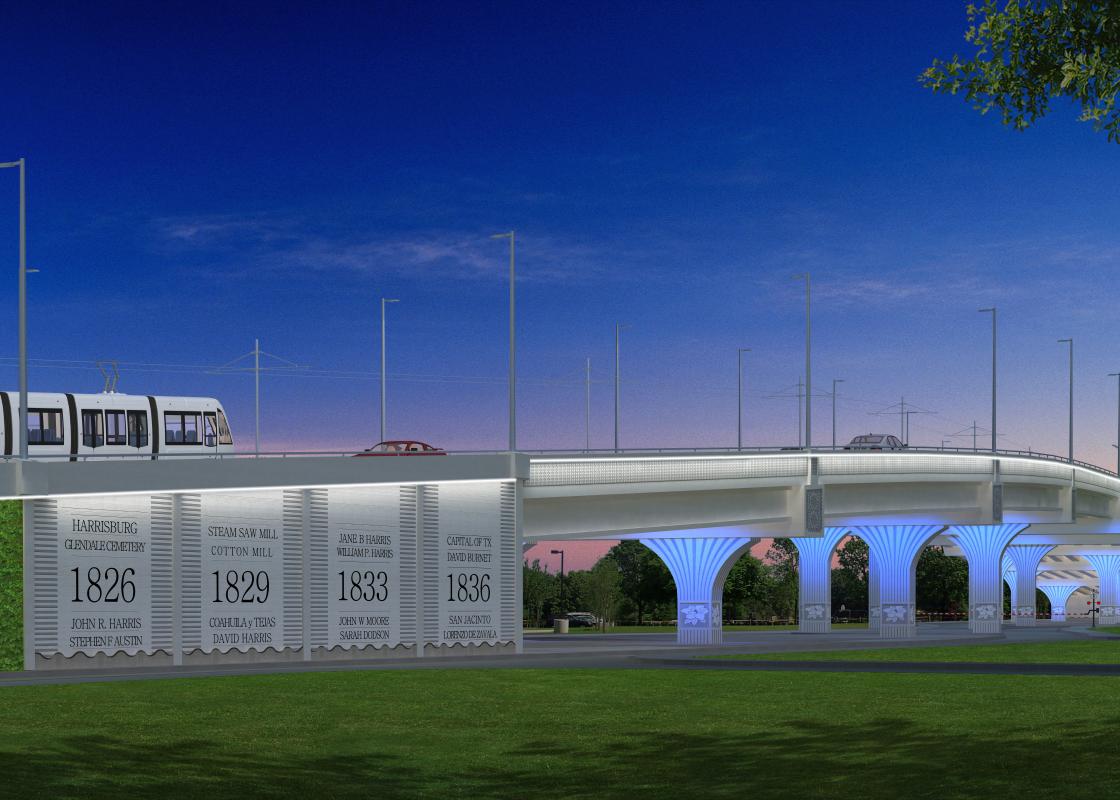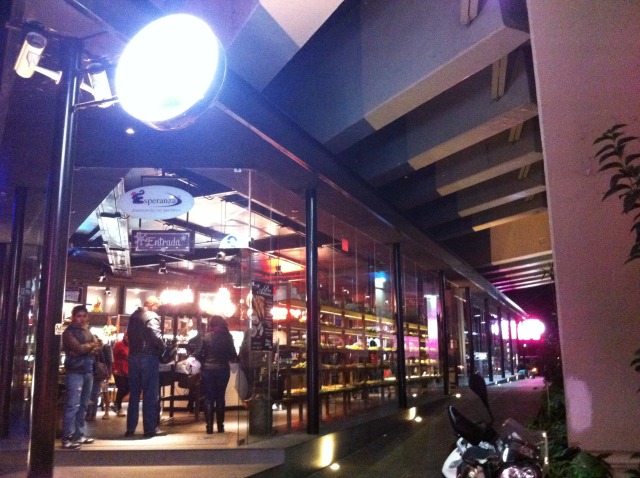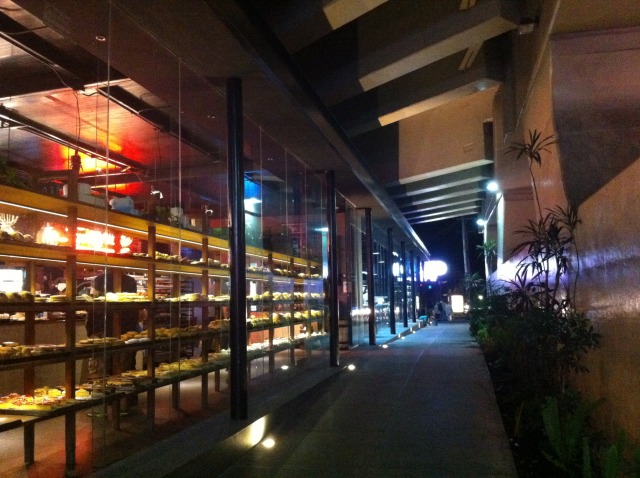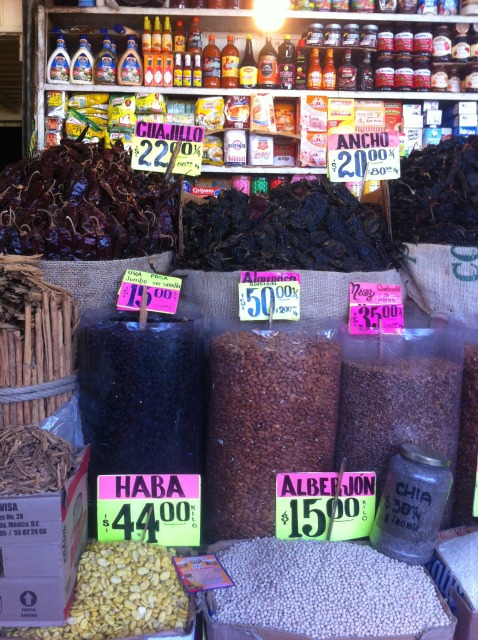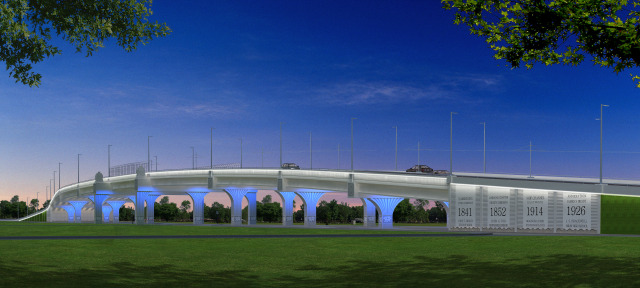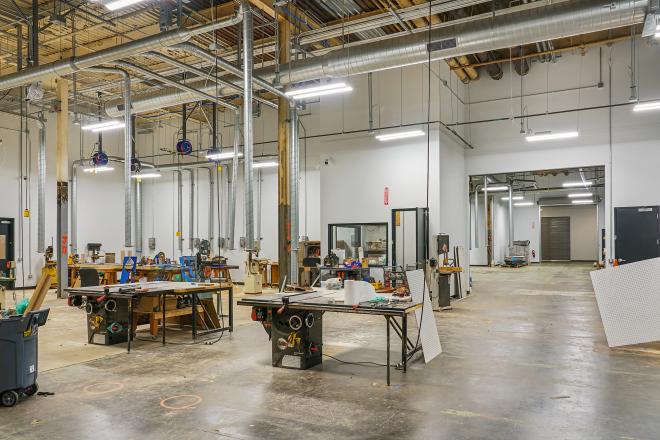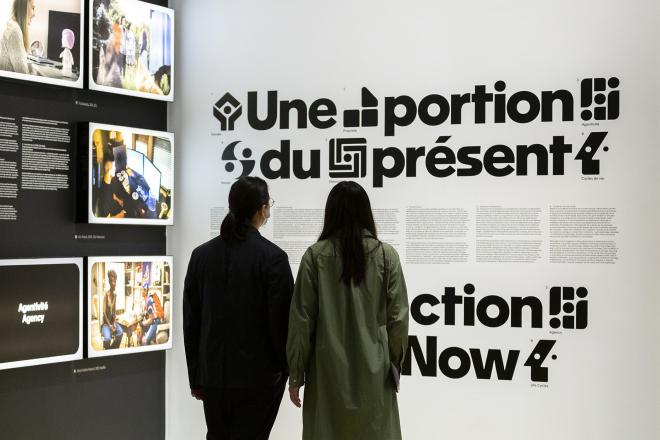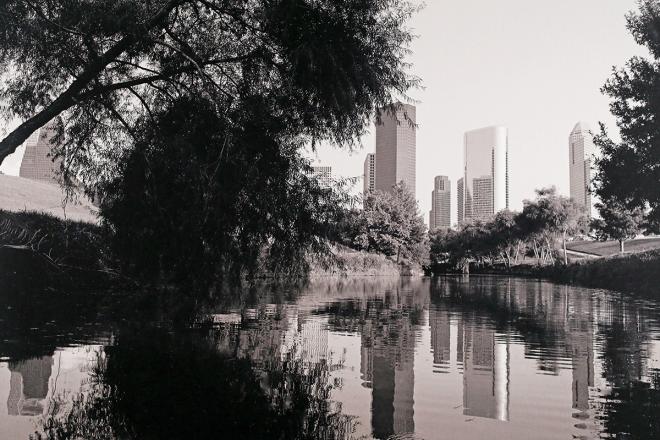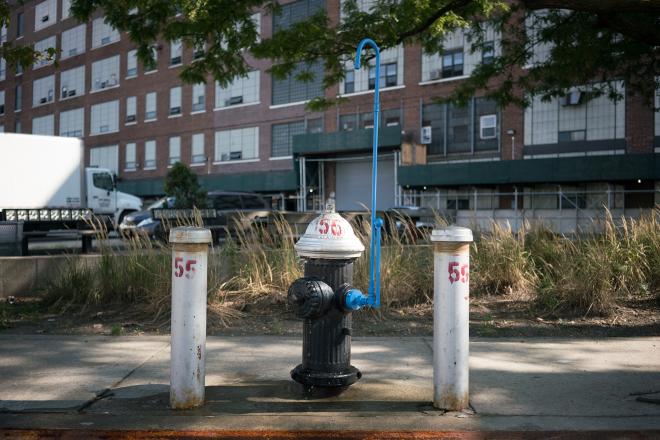On Saturday, March 14, Metro broke ground on a light rail overpass at Harrisburg that upset many Houstonians in the East End, believing it couldn't be anything but an eyesore. Can we imagine the Houston underpass as shelter for life instead of an unwanted and dangerous dead space?
Berlin architect Markus Bader recently discussed his "Kitchen Monument" project at The Museum of Fine Arts, Houston, for the RSA/RDA "Plug-Ins" lecture series. The project began with the activation of an underpass with a giant bubble where dances and dinner parties were held. Watch an excerpt from the talk below or the full talk here.
https://youtu.be/EIKs_CUROH4?list=UUkoXJLc33sbd1xRM8d84OUg
On a recent trip to Mexico City, I saw firsthand a more permanent use of the underpass. Upon entering Mexico's Federal District, one is overcome with the sense of being surrounded. Human forms besiege you on all sides, sitting in small shop windows flush with the street, peddling goods along both sides of the sidewalk, and moving like bees through the tunnels of the metro. The sheer density of the populace is impressive, but the way people take advantage of the situation to make a living is even more intriguing. Mexico City makes a spectacular use of its urban space for commerce in two forms. The first is through the "unofficial commerce" of street vendors and callers who roam the subways and routes of public transit. The second is structural, with storefronts built into the sides of underpasses and overpasses, the inclusion of kiosks in transit centers, and the continuance of public markets.
The informal commerce consists of individual vendors who purchase their goods at wholesale markets each morning and hawk these wares wherever they can find a spot --- on the sidewalk, at the entrance to public transit stations, outside of churches and tourist destinations. The items sold can be anything from chicharrones to earrings to wallets to waterproof cellphone cases.
Some of these enterprising street vendors will spend their day hopping from train car to train car, waiting for the doors to shut before they begin their sales litany. The vendors will declare their product, describe its usefulness, and state the price before repeating themselves in a loop without pause. Some of the items might seem odd even as an impulse buy, such as children's math books or bubble blowers, but when presented with the throngs of people that constantly pass through the metro's tunnels, a vendor will invariably find a buyer.
A more traditional form of commerce takes place in small shops that are built into the infrastructure of the city. There isn't a subway station that doesn't have at least one kiosk selling snacks or cellphone SIM cards inside of it, and the food stands and carts that line the streets are the reason why Mexico's capital is so well known for its street food. Public markets are a traditional aspect of Mesoamerican culture, and those in Mexico City have been government-regulated institutions long before Cortez arrived. The goods have changed with the times, but many people still visit the markets for their produce and electronic purchases.
What struck me as an exportable practice was the way that spaces for businesses were carved into the structure of the city. For example, the entrance to one particular subway station requires one to take a small stairwell through the underpass of a busy road. A space like this would typically be a dark passage that one passes through quickly and uncomfortably. Yet here there are small businesses on both sides, selling health food supplements or clothing. The most impressive case of this was a highway overpass at Avenida de Mexico and Avenida Rio Churubusco with a busy food court underneath one portion and a beautiful bakery under another. This wasn't an overpass in a sleepy part of town; the highway was flanked by busy roads on either side. Still, the businesses attracted customers.
With 21 million people in the greater Mexico City area, all these forms of commerce can coexist. A sprawling city like Houston would have a hard time supporting such a high concentration of businesses throughout the city. Despite this, street vendors can still be spotted selling snacks on their bicycle carts in Houston's East End, Near Northside, Bellaire, even the Heights. Moreover, areas of exceptional density have increased dramatically in Houston. But street vendors face many restrictions, and it is forbidden for any business to operate on a city sidewalk. The shops in our tunnel system are a fair comparison, but their exclusivity and seclusion prevent them from having the same charm or civic value as Mexico City's street commerce.
Imagine taquerias and bakeries under the Harrisburg overpass; flower shops and hair salons under 288 in the Museum District and Third Ward; creperies and toy shops under the Pierce Elevated.
Lively street culture and public commerce are part of Mexico's civic traditions and cultural heritage, and that's not something Houston can simply adopt; but we can move away from actively preventing it. Though the health impact of proximity to busy roads is a consideration, especially for children, we can continue to reform laws that stop us from having street vendors in Downtown, and we can consider incorporating life into the structures we build. It would be another step toward an active pedestrian life, and a step away from a Houstonian public life that's so lonely.


